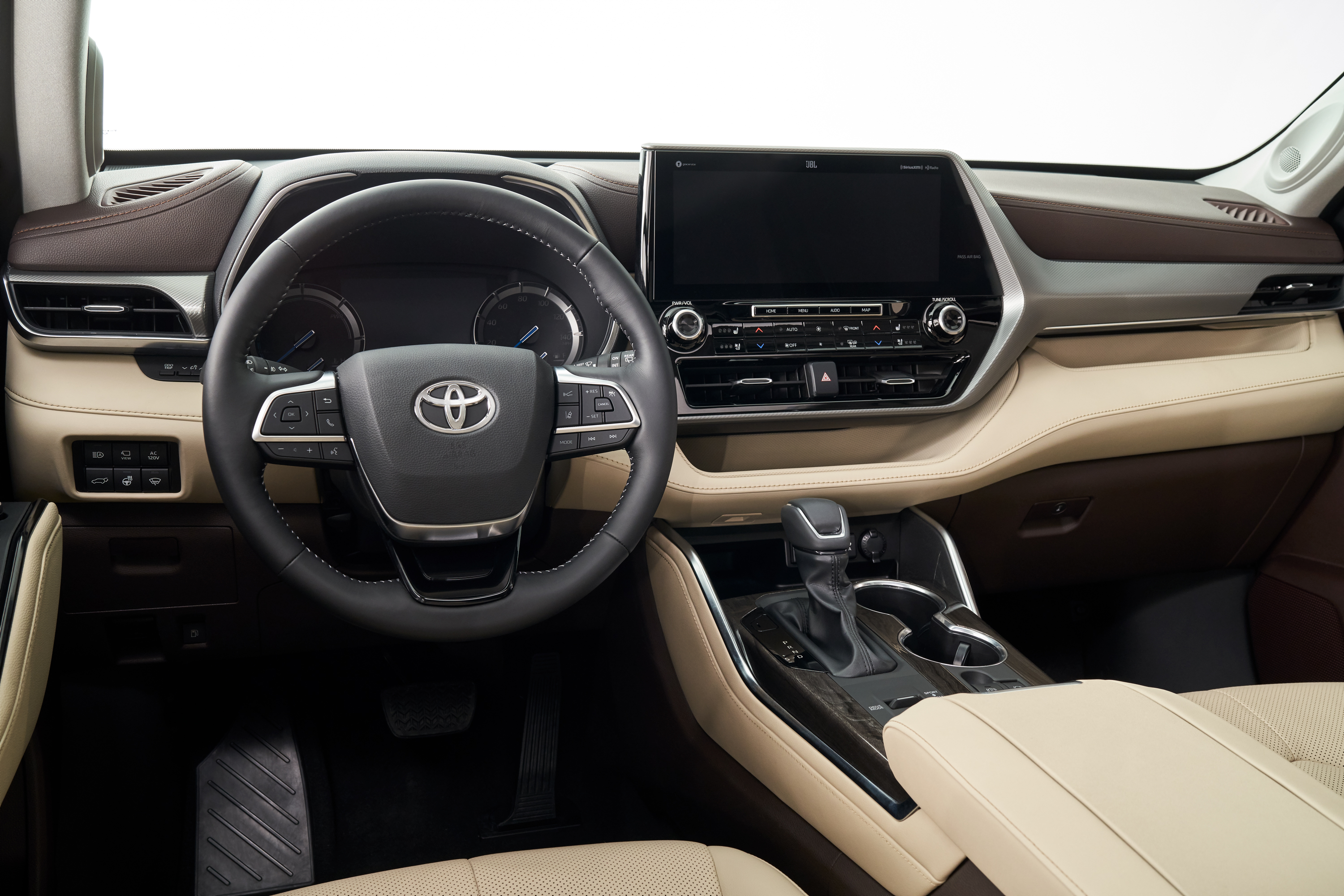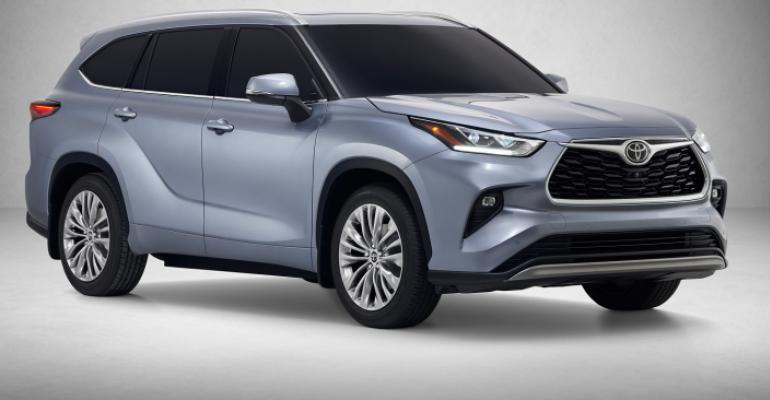NEW YORK – Toyota reveals details of the new ’20 Highlander ahead of the CUV’s debut later this morning at the 2019 New York International Auto Show.
Despite not undergoing a full redesign since ’14, the 3-row Highlander is the sales leader among D-platform midsize CUVs in the U.S. Its 244,511 sales in 2018 were a 13.3% increase from 2017 and topped rival Honda’s newer Pilot by roughly 125,000 units.
The next-generation Highlander grows in size from its predecessor (now making it a large CUV per Wards Intelligence segmentation), gets better hybrid fuel economy and has as standard equipment Toyota’s suite of advanced-driver-assist system technologies.
Toyota foresees an estimated 34 mpg (6.9 L/100 km) combined in hybrids, up from 28 mpg (8.4 L/100 km) in ’19 models.
The non-hybrid ’20 Highlander appears to retain from the '19 model the automaker’s 3.5L naturally aspirated V-6 with direct and port fuel injection (D-4S) and stop/start. The engine was installed as part of a mid-cycle refresh in the outgoing generation of the Highlander. Specifications remain the same, with the engine achieving 295 hp and 263 lb.-ft. (357 Nm) of torque. The 3.5L V-6 remains mated to Toyota’s 8-speed automatic transmission.
The 3.5L is the only non-hybrid engine listed in press materials. The base 2.7L 4-cyl. from the '19 model looks to have been dropped for ’20.
The Highlander Hybrid now uses a “more compact,” new-generation system pairing a 2.5L DOHC 4-cyl. with – per Toyota tradition – two electric motors. Total output is 240 hp, down sharply from 306 hp in the outgoing ’19 Highlander. Toyota says the CUV “still delivers the everyday acceleration, power and responsiveness that family buyers expect.”
The transaxle’s size and weight is cut by making the reduction gear a parallel shaft gear instead of planetary. There’s also a new multi-function gear integrating the power-split planetary ring gear, parking gear and reverse-drive gear. Also, a smaller and lighter power stack on top of the transaxle lessens energy losses, the automaker says.
There are three all-wheel-drive systems available on the new Highlander, two for the V-6 models and one for the hybrid. The L, LE and XLE grades’ AWD can send up to 50% of available torque to the rear wheels, while the Limited and Platinum grades get a Dynamic Torque Vectoring AWD with Drive Mode Select and Driveline Disconnect. It can distribute torque to any wheel.
With a terrain selection dial, drivers can increase traction in various conditions, including when driving in mud or on sandy soils.
The hybrid AWD model uses a third motor, mounted in the rear, to power rear wheels when necessary; there is no mechanical connection between the wheels and the transmission.
The Highlander rides on Toyota’s new, high-strength-steel intensive TNGA-K platform, which the automaker says increases its safety over the outgoing model.
Toyota continues to democratize ADAS by making its Safety Sense 2.0 suite standard. The Highlander includes pre-collision with pedestrian detection, lane-departure alert with steering assist, full-speed dynamic radar cruise control, automatic high beams and two newer technologies, Lane Tracing Assist and Road Sign Assist. The former can recognize the path of a proceeding vehicle if painted lanes cannot be detected, while the latter can display various road signs for improved driver recognition.
Infotainment options included a new 12.3-in. (31-cm) touchscreen on the Platinum grade, as well as 1,200-watt JBL sound system. All grades have standard Apple CarPlay and Android Auto, as well as Alexa in-car compatibility and WiFi via AT&T.
Toyota promises the “plushest accommodations ever” inside the Highlander, noting it has softer padded surfaces and a more tailored look (including stitching that carries over from the instrument panel to the doors) than its predecessor. All grades have inset steering wheel controls for a “modern luxury” appearance.

Ambient lighting, a growing trend in luxury vehicles, is on Limited and Platinum grades.
The Platinum comes standard with captain’s chairs in the second row, while the L and LE models have a standard bench seat for 8-passenger seating. The Platinum, “the most luxurious Highlander ever offered,” wears embossed, perforated leather trim in Graphite, Black, Harvest Beige or Glazed Caramel.
The ’20 Highlander goes on sale in the U.S. in December and the hybrid variant follows in February 2020.





